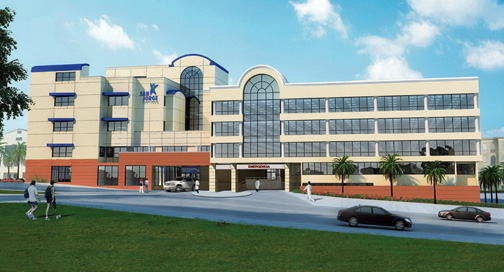San Jorge Hospital to attend mental issues with new wing


Construction on the new $3.5 million wing is slated to begin in January or February, with the opening slated for November 2014.
Fresh from a recent $30 million investment in a new four-story building housing an expanded emergency room, San Jorge Children’s Hospital is readying for yet another service expansion.
This time around it will address the mental health issues faced by the young by devoting a new wing exclusively to this type of care, said Senior Vice President of Operations Domingo Cruz.
Cruz said the hospital plans to convert an empty, 15,000-square-foot space located on the ground floor of its 500-unit parking garage into a 20-room wing where children and adolescents up to 21 years of age can receive specialized help for their mental health problems.
“Both in the U.S. and Puerto Rico mental illness is on the rise,” said the executive, ticking off mental conditions prevalent these days, such as drug addiction, depression, problem behavior, anorexia and bulimia, among others.
Construction on the wing is slated to begin in January or February of next year and will take about 10 months to complete, with the opening of the new care facility slated for November 2014.
Total investment is estimated at $3.5 million.
Young patients will count on a team of psychologists, psychiatrists, social workers, occupational and recreational therapists to help them work out their problems. Also, plenty of nurses, Cruz said, noting that 70 jobs in all will be created by the new addition.
San Jorge’s latest investment reflects the overall good health of the hospital industry, a sector that has grown over the past five years and expects to continue to do so. For example, Pavia Hospital plans to spend $3 million on a new three-story building for administrative offices and a ground-floor hotel for medical tourists. The HIMA Group plans to build a new hospital in Humacao to be exclusively devoted to medical tourism and the Mennonite Health System reportedly has secured permits to build a new hospital in Coamo.
While the island’s long-running economic recession has touched all sectors, the hospital industry “is one of the least affected ones.
“There will always be sick people,” said Cruz, who is also chairman of the board of the Puerto Rico Hospitals Association.
Recession nips cosmetic surgeries
Still, one area where San Jorge has felt the sting of the recession is cosmetic surgery, which, according to Cruz, has dropped by 30 percent. This type of surgery is not usually covered by health plans and people must pay it out of their own pocket, harder to do when the economy is in trouble and jobs are on the line.
“We used to have a waiting list,” said Cruz, as he led a personal tour of the wing dedicated to cosmetic and reconstructive surgery patients. Like the rest of the hospital, the area has a homey ambience. The floors are made of wood, artwork by renowned Puerto Rico artists decorates the walls and all the rooms have mahogany furniture. Patients who arrive for a surgery are given the choice of registering in their rooms for added privacy.
Cruz said that the biggest challenge ahead for the hospital sector is that 45 percent of patients in Puerto Rico cannot afford to pay for their medical costs and are dependent on Medicaid and the government health program, Mi Salud. The problem, he said, is that Medicaid pays 30 percent less even though patients receive the same kind of services people on private plans or Medicare get.
Medicare currently covers 13 percent of the population and “by 2025 it will be covering 25 percent,” Cruz said, adding that the impact of this segment is enormous, representing “the largest percentage of people who are sick. 40 percent of patients in hospitals are Medicare.”
In view of the continuing growth of the sector, Cruz said hospitals in Puerto Rico must continue their long-running fight to achieve 100 percent parity in Medicare reimbursement, up from the present 75 percent.













